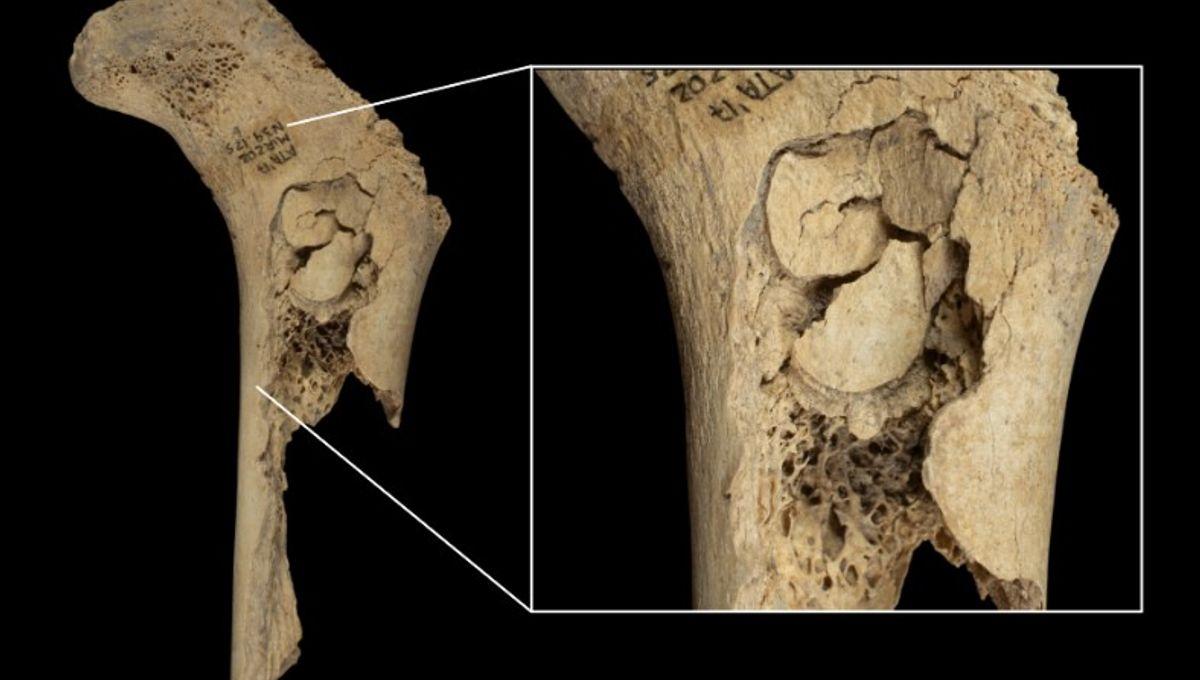-
أخر الأخبار
- استكشف
-
الصفحات
-
المدونات
-
المنتديات
Neolithic Cannibals In Spain Ate Their Enemies As A Form Of “Ultimate Elimination”

Neolithic Cannibals In Spain Ate Their Enemies As A Form Of “Ultimate Elimination”
The remains of what may be an entire family have been discovered in a Neolithic cave in northern Spain, with evidence suggesting that the group was eaten by cannibals. According to researchers, the barbaric act had nothing to do with either famine or religion, but was probably motivated by conflict and a desire to annihilate a clan of enemies.
Discovered in El Mirador cave in the Sierra de Atapuerca, the gnarled human bones add to a growing number of known instances of cannibalism in the area, stretching back to pre-Neanderthal times. “With this new discovery, Atapuerca now has three known cases of prehistoric cannibalism, one of which, at Gran Dolina, dating back approximately 900,000 years, is the earliest known example in human history,” Francesc Marginedas from the Catalan Institute of Human Paleoecology and Social Evolution (IPHES) told IFLScience. Some time between 4,100 and 4,600 years ago, six Bronze Age individuals were also eaten at El Mirador, suggesting the practice of cannibalism was a recurring one over many millennia. Now, Marginedas and his colleagues have identified the remains of at least 11 people who were consumed at the same site between 5,709 and 5,573 years ago. The researchers analyzed 650 well-preserved fragments of human skeletons belonging to a group consisting of children and adults. Evidence of cremation was found on 222 of these bones, while 69 presented signs of butchery. Cut marks from slicing and chopping were also seen on 132 fragments, with several also bearing bite marks made by human teeth. Cut marks on a foot bone from El Mirador. Image credit: IPHES-CERCA “The evidence supports a comprehensive butchering process involving meat, viscera, bone marrow, and brain extraction,” write the researchers in a new study. According to the authors, this cannibalistic act was probably not a funerary tradition, since it appears to be an isolated case that occurred at the very end of the cave’s Neolithic occupation. Emergency sustenance has also been ruled out as a motive, since there are no indications of food scarcity in the region at this time, and none of the other remains found at the site show signs of metabolic pathologies associated with famine. The study authors therefore suggest that the incident may represent a case of “warfare cannibalism, in which the victims, likely a nuclear or extended family, may have been killed in a single event by a neighbouring or external group.” Evidence for this idea is supported by a series of other Neolithic massacres in Germany, France, and Spain, where families consisting of adults and children were cannibalized, closely mirroring the age range of the victims at El Mirador. In a statement seen by IFLScience, study author Antonio Rodríguez-Hidalgo suggested that these horrific bloodbaths may reflect widespread intergroup conflict during the Neolithic, “in which the enemies could be consumed as a form of ultimate elimination.” Speaking to IFLScience, Marginedas explained that “these findings offer valuable insights into the social and cultural context of Neolithic communities in the Sierra de Atapuerca. They reveal a landscape of potential interpersonal violence and possibly organized conflict and consumption of the enemies.” “It's also important to emphasize that the Neolithic period in Europe was not uniformly peaceful,” said Marginedas. “Beyond El Mirador, two other identified contexts of Neolithic warfare-related cannibalism have been documented: Herxheim in Germany and Fontbrégoua in France.” According to the authors, the Neolithic period is “increasingly recognised as one marked by conflict and instability,” and outbreaks of violence and cannibalism may therefore have occurred in response to the social upheaval that accompanied the shift from hunting and gathering to farming. The study is published in the journal Scientific Reports.


